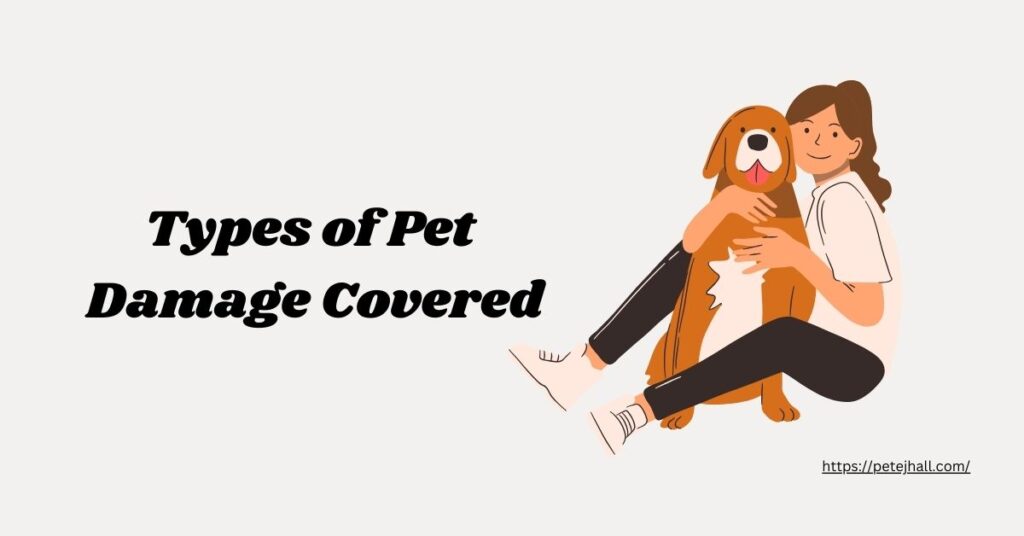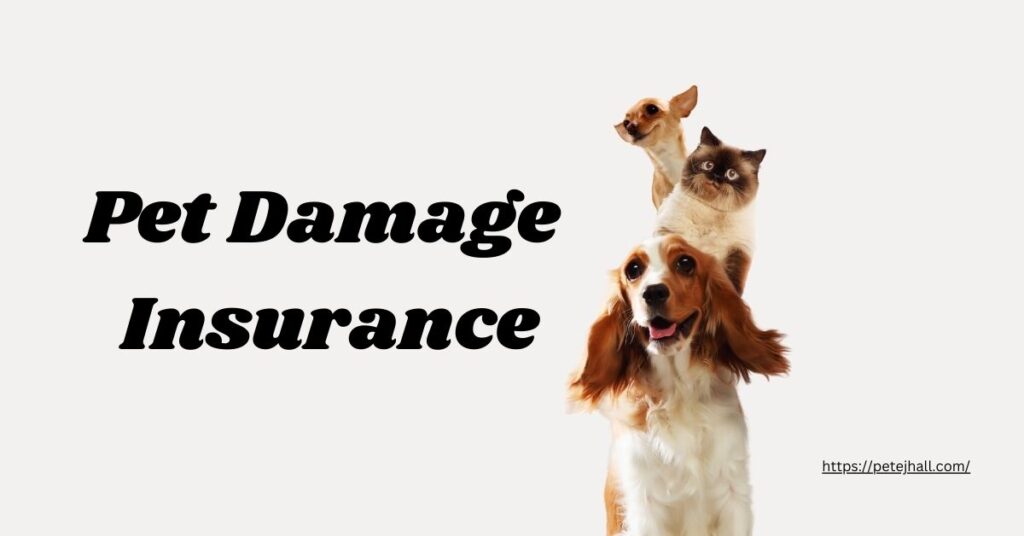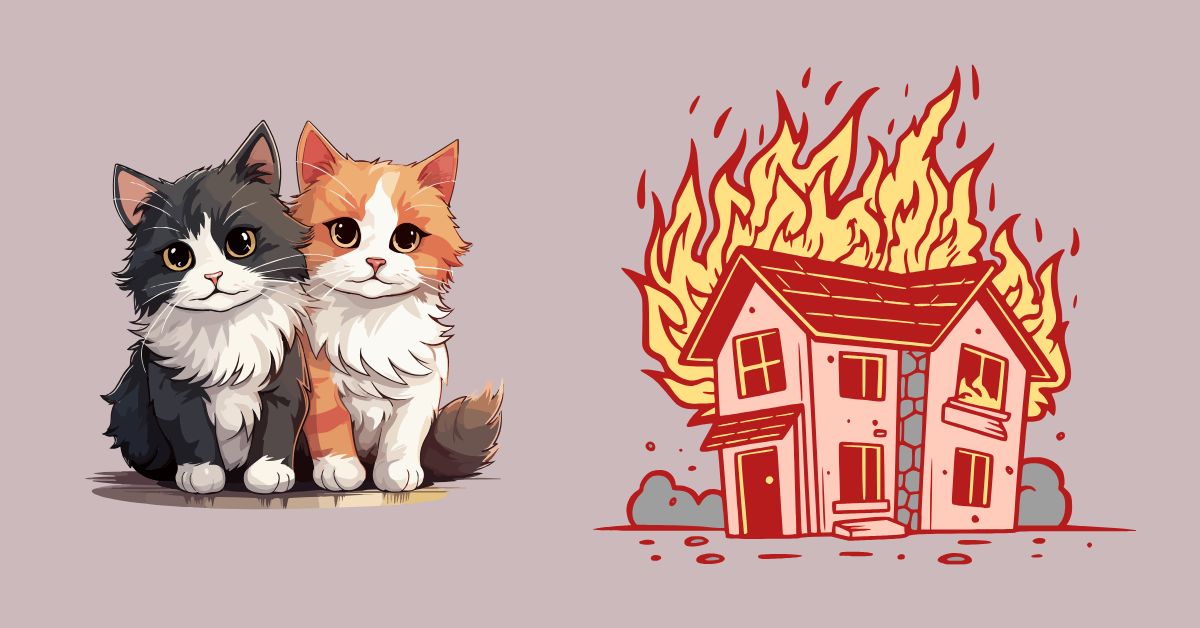Pets can provide happiness, humanity, and a layer of protection. Pets can cause damage to rental properties, leading to conflicts and costs that neither landlords nor tenants are prepared or willing to bear. This is where pet damage insurance for rental properties can save you. Read on to discover all about Insurance for Pet Damage to Rental Property, what it is, and how the system works—plus why landlords and tenants with pets will benefit from having coverage in place.
What is pet damage insurance?
What is pet damage coverage? Unlike therapy and service animals, pets themselves can be a source of destruction in rental properties. Both landlords and tenants have the option to purchase this insurance, depending on their desire to safeguard against the potential risks associated with pets. While most renters or landlord insurance policies cover accidental damage, incidents related to pets often fall under exclusions, necessitating separate coverage for agate countertops.
Why Insurance for Pet Damage to Rental Property Very Important?
From a landlord perspective, there is an appeal to letting your tenants have pets, as this broadens the type of tenant you are likely to attract; however, it also comes with risks. Pets can cause damage to carpets, walls, furniture, and even the garden over time. If the property owner does not directly charge renters for these costs, they bear the responsibility. Having pet damage insurance provides landlords with financial security in the unlikely event that pet owners cause costly issues within their home.

Tenants: Many renters struggle to locate properties that are welcoming of pets. Renter pet insurance can shield you from lawsuits and inform landlords of your dog’s insurance coverage! It can further prevent tenants from losing out on their security deposit when a pet causes minor damage inadvertently.
How Does Pet Damage Insurance Work?
You can easily personalize your pet damage insurance to protect against any kind of destruction. Generally, the process operates as follows:
- The Cooling Fan is a device designed to reduce the temperature of your laptop. Coverage Options: Policies can offer coverage for scratches, stains, odors, or structural damage. However, the policies can differ from one insurance provider to another, so you will need to read them carefully.
- Claim Processing: Should damage occur, individuals can initiate a claim by reaching out to their insurance provider. The assessor may conduct an assessment to determine if the damage is significant enough to warrant a claim.
- Insurance expense: The cost of pet damage insurance varies depending on the type of family pet, residence, and coverage limits. It has relatively low premiums, making it an affordable option for landlords or tenants.
Types of Pet Damage Covered

Landlords and tenants who might consider purchasing pet damage insurance can benefit from understanding the included damages. Some common damages include:
- Pet Damage: Just like in a house, pets (especially those not potty-trained) will urinate upon carpet and possibly leave scratch or tear marks on hardwood floors.
- Column 3: Dog and Cat Might Furniture Scratches Sofas, Doors, etc. Visible damage
- Odors: The unprovability of pet odors and stains can even lead to hiring a professional cleaner.
- Wall Damage: Your pets will constantly chew, scratch, or attack the walls, leaving behind unsightly marks that require repair.
- Garden & Yard Damage: Outdoor pets are more likely to do things like dig up your flowers, chew on plants and bark trees, or start creating tunnels in the yard.
Pet Damage Insurance vs. Security Deposits
Although this method is effective, it poses a risk due to the clutch’s limited 165 tq rating. In most cases, you will end up replacing the clutch with another one that is already unsprang. And it’s likely not enough help. Pet damage cover could be the perfect solution for you.
- Limited Security Deposits: Local regulations typically cap the dollar amount a security deposit can be. If the cost of repairs surpasses the deposit, landlords may incur additional expenses. Pet damage insurance offers an extra layer of coverage that will reduce the financial impact on landlords.
- Avoid Disputes between Landlord and Tenants: At the end of a lease, insurance provides peace of mind for both parties. It secures the financial interests of both sides and thus reduces complications during rental. _DROP(outputs)
Pet Damage Insurance
If you’re considering buying pet damage insurance, here’s what you should do.

- Investigate Research Providers: The first thing you want to do is take a peek at the various insurance companies that provide pet damage coverage. Look at their policies, the different coverage options, and which ones have the lowest premiums.
- 2) Look at your current policies: Renters and landlords’ insurance plans may have pet damage riders available. If you have a policy and live in an area at risk of flooding, it is also worth asking your current provider if they offer the service instead of purchasing one separately.
- Know the Fine Print: Double-check the policy’s inclusions and exclusions. Check for any blanket exclusions, such as damage from specific breeds or pets not included in the lease.
- Enter Pet Information: You will be required to include details for your pet, such as breed, age, and if it is a good boy. This data also serves to measure risk and set insurance premiums, for which companies will be willing to essentially “buy the right” to use your personal information.
How pet owners can prevent damage
While insurance may provide compensation, it is always preferable to prevent damage from occurring in the first place. Here are some tips for pet owners to prevent property damage. Pets can easily contribute to the destruction of items in your home, including items on their own bodies.
- If you are a fur mama, it’s important to properly train your pet to avoid accidents and risky habits. As I’ve previously mentioned, pets mimic living beings, and teaching them to obey commands, including putty training, can significantly reduce the expenses associated with damage.
- Keep them entertained: Boredom often leads to more destructive behavior in pets. Provide a variety of toys that they can keep occupied with while alone.
- Cover Furniture and Floors: Employ scratch guards, pet-proof flooring, or other covers to reduce damage. If necessary, use baby gates to keep pets out of certain areas.
- Grooming: If you keep your pet’s nails short and their coat clean, they are less likely to destroy furniture or carpets.
FAQ
Is pet damage covered with renters’ insurance?
Many standard renters’ insurance policies do not cover damage from pets. You might need to purchase a rider or pet damage policy. © 2020 Broadpath® (Cloud Insurance Services)
Is it legal for landlords to mandate animal damage insurance?
Landlords can and do ask tenants to maintain pet damage insurance as a lease term. It will ensure coverage for all damages caused by the pet.
Cost of Pet Damage Insurance
The price varies considerably depending on the pet, coverage level, and property. Generally, the premiums cost $10–$50 monthly.
What if tenants are responsible for the pet damage?
If your pet causes damage, let your landlord know right away and look at what coverage options are available in the insurance policy. You can avoid most disputes if you file a claim within 30 days of completion.
Do All Animals Have Pet Damage Insurance?
Not necessarily. Some policies have varying degrees of breed restrictions, and many of them exclude exotic pets. Verify with your insurance company.
Conclusion
Both landlords and tenants should be concerned about the potential damage that pets can cause to rental properties. These are issues that require solutions, such as those developed by Peter McDonough from Cambridge. It simplifies the process of renting with pets, minimizes conflicts, and offers financial protection. Pet damage insurance protects both landlord and tenant by keeping pet-friendly accommodation available. Be prepared by understanding the various types of coverage available, their entailments, and their pros and cons. Minimizing previous damage benefits both landlords and tenants.

